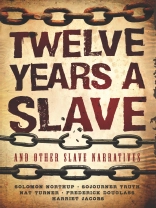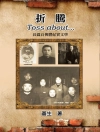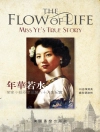‘Reader be assured this narrative is no fiction. I am aware that some of my adventures may seem incredible; but they are, nevertheless, strictly true.’
—
Incidents in the Life of a Slave Girl
Before slavery was outlawed in the United States in 1865, most free Americans had little understanding of this brutal institution. One of the abolitionist movement’s few tools for illustrating its horrors was the slave narrative. Memoirs written by former slaves provided hard-hitting eyewitness accounts of the day-to-day cruelties of slavery. These narratives also gave hope. With their vivid imagery and thoughtfully poignant commentary, these stories by once-captive African Americans—frequently scorned by many white Americans as subhuman—helped prove the abolitionists’ argument that these people were as deserving of freedom as any other person.
This anthology collects five of the most stirring slave narratives ever written.
The Confessions of Nat Turner (1831) — In 1831 in Virginia, the charismatic and religiously minded slave Nat Turner led one of America’s bloodiest slave rebellions. He and his followers killed dozens of people before they were routed by state and federal troops. This short and dramatic account of that uprising was dictated by the imprisoned Turner just days before he was hanged.
Narrative of the Life of Frederick Douglass (1845) — Frederick Douglass was born a slave in 1818 but freed himself in 1838 after several attempts. He went on to become the most influential African American leader in the abolitionist movement. This volume, which is both a slave narrative and essay on abolition, became an instant bestseller and is regarded today as a seminal work of American political and moral literature.
Narrative of Sojourner Truth (1850) — Born into slavery, Sojourner Truth was freed in 1827. One of her first acts as a free woman was to sue a wealthy white man for the recovery of her son, whom he had sold illegally. She later became a popular evangelical missionary and anti-slavery lecturer; her religious and political passions are reflected in this fiery memoir.
Twelve Years a Slave (1853) — Made into an award-winning film in 2013, this is the incredible story of Solomon Northup, a free African American man from upstate New York who was captured by slave dealers who lured him to Washington, D.C. Northup’s account of his sadistic owners and the torture they inflicted is notable not just for the precision of his writing but also its surprisingly compassionate ability to find good in even the darkest places.
Incidents in the Life of a Slave Girl (1861) — Harriet Jacobs was the first female slave to publish her own story. After enduring years of sexual harassment, she ran away and spent nearly seven years hiding in a tiny crawl space in her grandmother’s house before escaping to freedom in 1841. Her book was also was one of the earliest narratives to openly discuss the endemic sexual abuse of female slaves.












